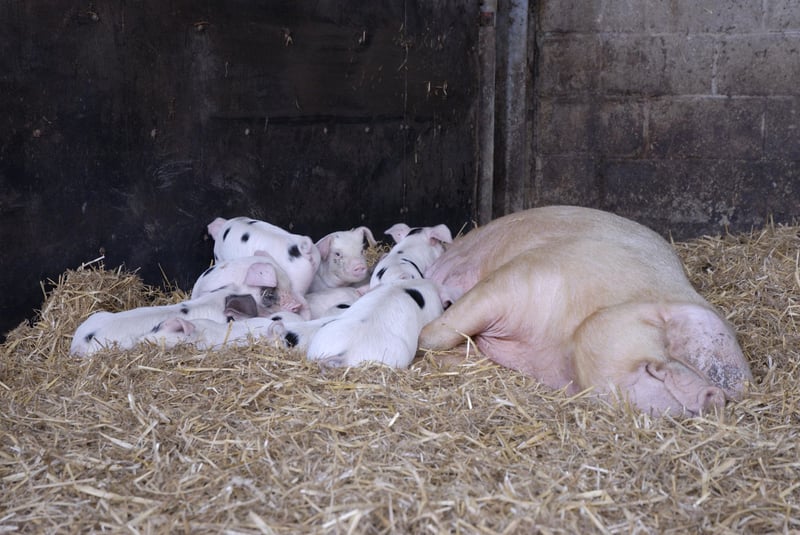
Can pigs outsmart people?
News
You won’t believe what Kate Blaszak, global farm animal advisor for World Animal Protection, discovered on her recent visit to a farm in Thailand.
Kate learned that each morning when the farm staff arrived at work, they found around 40 mother pigs had outsmarted them by jumping out of their cages. They were discovered quietly roaming around the barn together in the morning light.
These highly intelligent animals knew what they wanted and how to get it!
The mother pigs (sows) had known and smelt freedom and were not happy to remain confined and alone when they knew there was another way.
They were luckier than most, as they had known some freedom to move, turn around, choose their spot to lie down, their feeding time and their friends, while housed in groups during pregnancy. After giving birth to their piglets, they had been placed back into individual cages for insemination again, crammed in an area no bigger than an average fridge, unable to turn, move or socialise.
Three out of four mother pigs globally find themselves in these small barren cages, not just temporarily but for their entire adult lives. They are deprived of their basic needs, such as the space to turn around, lie next to their friends or move away from their enemies; no choice at all, day in day out. No wonder they become stressed and depressed, bar biting and sham chewing in frustration.
This is the what factory farming of pigs looks like around the world today. For millions and millions of mother pigs.
But the mother pigs in this story were fighting back! They had hope, stronger legs from not being permanently kept in cages, and with determination the boldest ones had managed to escape each night. What were they trying to do? Were they just being ‘wild’?
Being wild, is a long way from the commercial concrete pig production that churns out most of our pork today.
An important research project led by Stolba and Wood-Gush (1989) considered what pigs would do if returned to their natural, wild environment. Researchers released a small group of pigs into woodland and bog areas and observed what happened over 5 years.
Unsurprisingly, the pigs acted as we now know all farmed and domestic pigs would act given the opportunity to behave naturally. They foraged about in the forest floor, looking for nuts, roots, plants and insects to eat, turning the soil and exploring their surroundings with their powerful snouts and sense of smell. The mother pigs stayed together to protect their young, and created comfortable beds, hollowed out and soft, to rest, sleep on and give birth.
Domestic pigs retain the innate behaviours of their wild ancestors. These incredibly strong needs cannot be bred out of them, even over thousands of years of domestication. Pigs need to perform these natural behaviours to have a good life, to live comfortably, socialise and experience pleasure.
So, when those mother pigs jumped out of their cages, they were sending a clear message to the farm workers – a message that they needed to behave naturally and deserved a life worth living. All the staff had to do was listen and learn.
The mother pigs had known and smelt freedom and were not happy to remain confined and alone when they knew there was another way.
Farm animal cruelty
From painful mutilations to rough handling and slaughter at a young age – animals on factory farms suffer on many levels.
Your food
Your food choices can have a big impact on your health, the planet and farm animal welfare. Not only are plant based options healthy and delicious, they are also sustainable, and kinder to animals.


 Image credit: World Animal Protection/Thomas Alexander
Image credit: World Animal Protection/Thomas Alexander
